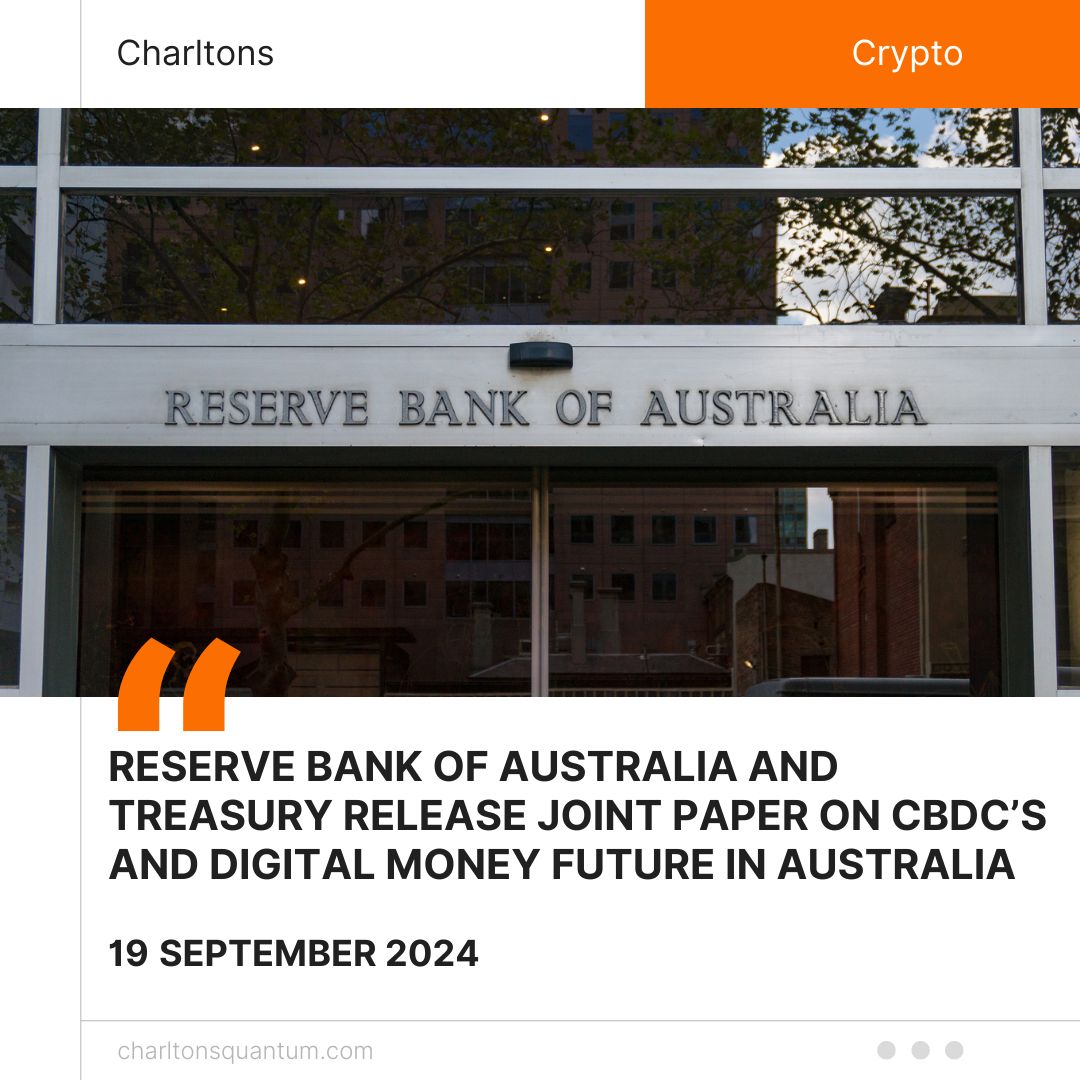
On 18 September 2024, the Reserve Bank of Australia (RBA) and Treasury published a comprehensive joint report ‘Central Bank Digital Currency and the Future of Digital Money in Australia’ on the role of CBDC and digital money in Australia’s financial future. The report summarizes the findings of ongoing research into CBDC, providing insight into the considerations for both retail and wholesale CBDCs in Australia. Additionally, it sets out a three-year roadmap for further work in this space, highlighting the potential benefits of digital money in enhancing financial systems.
The report states that, as of now, there is no strong reason to introduce a retail CBDC (a digital currency for everyday use by the public) in Australia. This is because the current payment systems are already efficient, secure, and serve the public well. Report acknowledges that this could change over time as technology and economic conditions evolve. Therefore, the RBA and Treasury will continue to assess the potential benefits and costs of retail CBDC.
On the other hand, the report shows more support for the idea of a wholesale CBDC, which would be used by financial institutions rather than the public. This type of CBDC could improve how large financial transactions are made, particularly by making them faster, more transparent, and more efficient. The RBA plans to prioritize research into wholesale CBDCs and how they could be integrated into Australia’s financial system. The report also mentions the upcoming launch of Project Acacia, which will focus on the use of tokenized money and new settlement technologies in wholesale markets.
The report also explains that if retail CBDC were to be introduced, it would require changes in legislation and close collaboration between the RBA, Treasury, and the Australian Government. The government would play a key role in deciding whether to implement a CBDC, particularly for public use.
In a speech delivered at the Intersekt Conference in Melbourne on 18.09.2024, Brad Jones, Assistant Governor of the RBA (Financial System), outlined the core conclusions of the report. Jones emphasized that while a retail CBDC, intended for public use, does not yet present a compelling public interest case in Australia, the wholesale CBDC holds more promise. This strategic focus reflects the assessment that Australia’s current retail payments system is already efficient and resilient, and that the challenges posed by a retail CBDC, including issues related to financial stability and monetary policy, outweigh its potential benefits at this stage.
Jones explained that unlike retail CBDC, which would introduce significant changes to the financial system, a wholesale CBDC would represent more of an evolution. Wholesale CBDC could enhance the functioning of wholesale markets, offering benefits such as improved transparency, efficiency, and risk management in market transactions.
As part of this focus, Jones announced the upcoming launch of Project Acacia, scheduled to begin its public phase in October 2024. The project will explore how tokenized money and new settlement methods can uplift the efficiency and resilience of wholesale markets. It will form part of the broader engagement between the RBA, Treasury, and industry stakeholders in assessing how Australia’s monetary system can be modernized to support the digital economy.
The Australian Government has taken a measured and cautious approach toward the introduction of a CBDC, emphasizing the need for a thorough understanding of its potential impacts. In his speech, Jones established that any decision to introduce a retail CBDC would ultimately lie with the government, requiring careful policy deliberation and likely legislative change. The government’s current stance reflects its recognition of the potential risks associated with a retail CBDC, particularly in areas like financial stability and privacy, while also acknowledging that the financial landscape is rapidly evolving. As a result, both the government and the RBA remain open to future reassessments based on ongoing research and international developments.
(Source: https://www.rba.gov.au/payments-and-infrastructure/central-bank-digital-currency/pdf/cbdc-and-the-future-of-digital-money-in-australia.pdf, https://www.rba.gov.au/speeches/2024/sp-ag-2024-09-18.html, https://www.rba.gov.au/media-releases/2024/mr-24-17.html)





